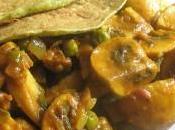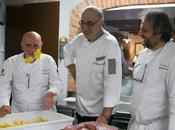
pecorino sardo
Among the many Italian cheeses there is one big group called pecorini ( made with the milk of the sheeps). In a precedent post I had already talked about this type of cheese, but there are a lot to say about it. In Italy the production of the handmade cheese is very extensive but the group of pecorini cheese recognized as a protected product has few cheeses. One of these is the pecorino sardo. This cheese is produced in Sardinia. So we are sure that you are using genuine Sardinian milk of the sheep and the milk enzymes. The Sardinian sheep - the queen of this milk- is not only in Sardinia but also in other regions. It may seem insignificant but the farming type is essential for the success of the final product. This sheep grows in dry climates, such as that of Sardinia and it has an extensive type of farming with the transhumance.

The Sardinian sheep is mainly used for the production of the milk and the majority of the Italians sheeps are the Sardinian breed. The most part of them are just in Sardinia.
The Sardinians were shepherds since the age of the Nuraghic. Only during the Roman domination the agriculture-still practiced even during the Nuraghic age - grew more with the introduction of corn.
The Pecorino is a delicious cheese apart the historical parenthesis. You'll find it in two versions: the sweet version or the seasoned version called maturo. Taste both the versions and decide which is the best!
The two products have a different taste. The first is sweet and it has an aging no more than two months, while the second is more spicy and the aging is about four / five months. You will have a great experience eating it with a piece of bread. You can also grate the seasoned cheese on the pasta (it's delicious, it adds an unmistakable aftertaste). Obviously it can be used for many recipes. A suggestion for your snack with pecorino? In my opinion you can drink with it a glass of Carignano del Sulcis, a good red wine grown in the Cagliari area ... just to stay on the same area!
Nella varietà infinita di formaggi che si posso assaggiare in Italia un gruppo sostanzioso sono sicuramente i pecorini. In un precedente si era già parlato di questo tipo di formaggio ma il discorso è sicuramente molto ampio. In Italia la produzione artigianale di formaggio è molto estesa ma del gruppo dei pecorini ma solo alcuni vengono riconosciuti come di origine protetta Uno fra questi è il pecorino sardo. Questo pecorino viene prodotto esclusivamente in Sardegna. Quindi siamo sicuri che venga utilizzato vero latte di capra sarda e fermenti lattici. La regina di questo latte non viene allevata solo in Sardegna ma anche in altre zone. Potrebbe sembrarvi poco rilevante invece il metodo di allevamento è fondamentale per la riuscita del prodotto finale. Questa capra cresce in climi secchi, come quello della Sardegna ed ha un allevamento di tipo estensivo con tanto di transumanza.
La transumanza è una migrazione stagionale per mandrie e greggi diffusa in varie parti d’Italia. Si portano i capi di bestiami in luoghi più caldi ed ameni per l’inverno che a certe altezza potrebbe essere rigido. Può essere un cammino lunghissimo! Pensate che certi pastori del Gennargentu ( catena montuosa della Sardegna) percorrono addirittura dai 50 ai 120 km. La pecora sarda è usata soprattutto per la produzione di latte e la maggior parte degli ovini Italiani sono di questa razza, benché la maggior parte sia proprio in Sardegna. Sin dal passato i sardi furono un popolo di pastori e si risale sin ai tempi della civiltà nuragica. Solo con la dominazione Romana si sviluppò di più l’agricoltura ( praticata comunque anche durante la civiltà nuragica) con l’introduzione del granoturco. Parentesi storiche a parte i pecorino sardo è un prodotto delizioso. Lo troverete nella variante dolce o stagionato detto maturo: già che ci siete assaggiate entrambe le versioni e decidete voi quale sia il migliore! Sono due prodotti dal gusto diverso, il primo è dolce ed ha una stagionatura che non supera i due mesi mentre il secondo è più piccante e la stagionatura supera i quattro / cinque mesi.Il solo mangiarlo con un buon pezzo di pane sarà veramente soddisfacente, potete grattugiare la versione stagionata del pecorino sulla pasta ( è delizioso, gli aggiunge un retrogusto inconfondibile). Ovviamente può essere usato per tante gustose ricette. Un suggerimento per il vostro spuntino a base di pecorino sardo? A mio avviso il Carignano del Sulcis un ottimo vino rosso coltivato nella zona di Cagliari…giusto per non allontanarci troppo!





